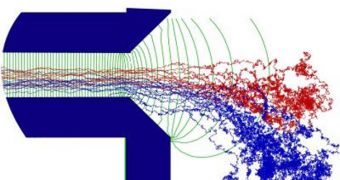There are numerous issues to consider when dealing with space exploration, not the least of which is the fact that discovering signs of life on a distant planet or moon is extremely difficult. Discovering fossils is hard enough even on Earth, let alone on space rocks such as Mars. Nevertheless, future rovers will need to move from studying rocks to studying potential remnants of past life forms, and they will need groundbreaking and sensitive equipment to do that. This is where a new instrument developed by experts at the US Department of Energy's (DOE) Idaho National Laboratory (INL) comes in, PhysOrg reports.
Researchers here have developed a machine that is more robust, smaller, more sensitive and cheaper than any other life-detecting instrument of its kind in existence today. A demonstration for this new technology – called Total Ion Control – is already scheduled to go off-world, aboard the ExoMars mission. The rover, which was ordered by the European Space Agency (ESA), is scheduled to be launched no earlier than 2018, but it will have tremendous scientific capabilities and potential. The TIC technology will be employed on the rover's Mars Organic Molecule Analyzer (MOMA) instrument.
What TIC does is provide a new way of directing ions (atoms with an electrical charge) along a defined path. This is accomplished by generating tremendously-complex electric fields, which act as guidelines for ions. The INL team has already filed for a patent on their technology, which is bound to innovate the field of mass spectrometry, they believe. “This is a novel way to shape electric fields for moving ions around. It can improve MOMA, and it could improve commercial instruments,” explains TIC co-developer Tim McJunkin, who is an engineer at INL. He adds that the target of all mass spectrometry readings is to determine the chemical composition of a sample.
The technique can be used to look for life on Mars, but also to analyze luggage content at airport security filters, or to determine the pathways drugs take after being inserted in the human body. The method therefore helps the fields of national security and medicine in equal amounts, the INL group emphasizes. “This is an enabling technology. If you want to move ions around cheaply and robustly, and without much weight, this is the way to do it,” says the leader of the US segment of the MOMA team, LuAnn Becker. She is a scientist at the Johns Hopkins University.

 14 DAY TRIAL //
14 DAY TRIAL //